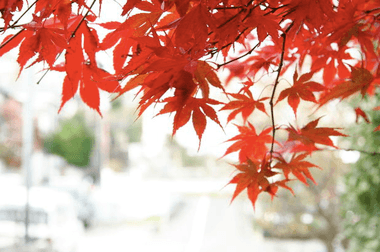I recently picked up a copy of “Urawaza: Secret Everyday Tips and Tricks from Japan” by Lisa Katayama, and I really enjoyed it. Described by Think Geek as “the Ninja version of Martha Stewart”, the book consists of dozens of off-centered lifestyle tips, covering everything from cooking tricks to winter sports. For example, you might “turbocharge” your winter sled by treating the bottom with nonstick cooking spray, or refresh stale coffee with a sprinkle of salt. Or, you might even use a household iron to help you perfect your bowling technique. If you have a common household problem, chances are that there is an urawaza trick that can help you out. The History of Urawaza As author Lisa Katayama explains in the introduction of the book, the culture of urawaza had its roots in post-WWII Japan. The country’s resources had been tapped by the war effort, and even basic provisions had become harder to come by. There were plenty of families that were trying to do more with less after the war, and even in modern Japan there are many families living in tiny city apartments who are looking to make the most of their space and resources. In 1997, the Japanese TV program “The Ito Family Dinner Table” brought urawaza into the mainstream. The program became so popular that at one point, over 30 percent of Japanese households tuned in to watch the show every week. The Look of the Book Each tip in the book is framed on a single page, outlining the dilemma, the urawaza solution, and a brief blurb that explains why the tip works from the scientific standpoint. It’s short enough to read cover-to-cover in a single sitting, and accessible enough to skim through for only a few minutes at a time. Even the design of the book is geared to help the reader be more productive. The front of the book is emblazoned with big friendly letters that encourage the reader to “DO EVERYTHING BETTER!”, a move that reminds me warmly of the “DON’T PANIC” cover art of The Hitchhiker’s Guide to the Galaxy. The obi-style wrapper on top of the book jacket is billed as “an instant fast-forward” (read: built-in bookmark) to help readers mark their place and easily refer back to tips they are looking to try out. So, What’s In This Book? The book contains over 100 tips across seven topic sections. Readers can peruse a variety of life hacks that include health tips, tricks to “amaze your friends”, beauty advice, “household hacks”, kitchen/food tips, laundry shortcuts, and tips for the great outdoors. Basically, whether you are young or old, male or female, there will be plenty of relevant hacks and tips for you to peruse. Whether you are looking for a way to prevent your car doors from freezing shut in the winter, or want to learn to master the perfect manicure, there’s a hack for that. My Top Picks Out of the dozens of great tips in this book, I have selected six that I thought were really interesting, unique, or just plain useful. Narrowing it down was tough, but the following tips are pretty excellent.
- A Foolproof Hiccup Cure: Instead of drinking water or swallowing sugar, the book suggests that you stick a cotton swab into your mouth and try to tickle your uvula. Doing so will initiate a gag reflex that will override the hiccup cycle. Kinda gross, but foolproof.
- Stop a Crying Baby: If you swish a little water in your mouth next to the baby’s ear, this will calm the child. This is because the sound is similar to the noises that the baby was accustomed to hearing while still in the womb.
- Vinegar Tricks: A dab of apple cider vinegar can banish blemishes, and a mix of white vinegar and tap water can be applied to your hair to make it shiny.
- Coffee Stains Begone: Boil spinach in water, and use that water and a toothbrush to lift stubborn coffee stains from fabrics. The oxalic acid present in spinach is good for busting coffee stains, but proceed with caution: this trick won’t work on white fabric because of the green pigments from the spinach.
- Fix a Shrunken Sweater: If you’ve accidentally shrunk a favorite wool sweater, you can return it to its original size by soaking it in a solution of tap water and hair conditioner for about 30 minutes.
- Use Your Washing Machine as a Shredder: Just place your documents into a pair of nylon pantyhose, and send them through the wash. The ink will fade or blur, and the paper will crumple and fall apart. Conclusion I really enjoyed reading this book. Although I haven’t had a chance to try out every single trick yet, I’ve found that some are better than others. For example, the “soap-in-the-microwave” trick was fun to watch, but didn’t deliver much in terms of results. But, I especially enjoyed the “create your own urawaza” section at the tail end of the book, as well as the section devoted to the art of tsubo (Japanese pressure points). The tips are solid overall, and the book is definitely worth picking up if you are a fan of life hacks.
